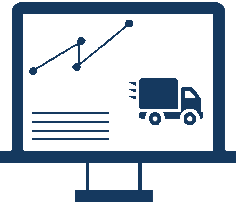
Freight Pro Logistics LLC
Frequently Asked Questions
Is Freight Pro a broker or a carrier?
- Freight Pro Logistics is a non-asset-based broker who facilitates and manages the shipment of goods with carriers on their client’s behalf, as opposed to a carrier who undertakes the actual carriage normally with their own assets such as trucks, trailers, and warehouses.
What is a bill of lading?
- A document which acknowledges receipt of the goods and establishes the terms of a contract between a shipper, transportation company or logistics provider (broker). It signifies which freight is to be moved between specified points for a specified charge. It serves as a document of title, a contract of carriage, and a receipt for goods. It is prepared by the shipper on forms issued by the broker/carrier and is a legal document.
What is an NMFC number?
- Stands for National Motor Freight Classification. A listing of items used to determine the “class” of a particular item shipped. The class of the item, along with the weight and distance traveled, are all determining factors in the freight charge.
What is a carrier PRO number?
- A carrier PRO is the number assigned to a shipment by the carrier once it has been successfully picked up from the shipper. It is used throughout the rest of the shipment’s transit until delivery for tracking-related purposes.
What is an accessorial fee?
- An accessorial is an additional fee for service beyond standard transportation pricing. Such fees would include residential or liftgate that are notated on a BOL or requested by the shipping or receiving party.
How can I track my shipments?
- You can either select the “Track Shipments” icon on the home page, which will redirect you to choose whether you want to log in to your FPL account for any Freight Pro orders or GTZShip account for any GlobalTranz orders you want to track. Or you may email us directly at Orders@freightprologisticsllc.com or even call us at our office at 909-357-9600 during business hours and one of our team members will be able to assist you.
How do I request a quote?
- You can either select the “Request Rates” icon on the home page or you may email us directly at Dispatch@freightprologisticsllc.com. You can even call our office at 909-357-9600 during business hours and one of our team members will be able to assist you.
I’ve requested a quote online. How long before I can expect a response?
- One of our team members should confirm receipt of your rate request within 30 minutes to an hour of submission. From there it can take an additional 30 minutes to an hour for our office to provide you with your rate, depending on whether you need an LTL rate or a full truckload rate. Some rates, like full truckload or volume, take longer than LTL rates to acquire because our office must source full truckload and volume carriers local to the pickup & delivery locations for both available capacity and competitive rates.
Can I insure my shipments?
- Yes, you can! Just include with your rate request online how much money (in USD) you would like your freight to be insured for, or just be sure to let one of our team members know you would like to have insurance included when being provided with a rate.
How should I be packaging my freight?
- Simply put: As well as possible. If your product is stacked on pallets, make sure to shrink-wrap the pallets well from top to bottom, taking care to make sure the shrink-wrap extends all the way to the pallet itself to keep your product from sliding off the pallet during transit. Heavy freight may seem like it won’t shift or slide but believe us, it does. If your items are loose or exposed (not in a crate or other packaging), the driver that’s dispatched to pick it up has the right to refuse it if he/she deems taking the freight to be too much of a liability in its current condition.
Do you handle hazardous materials?
- Yes! We work with a variety of carriers who specialize in handling Hazmat freight along with freight needing protection from freezing and other special handling.
Do you work with tradeshows?
- Yes, we do! We have lots of experience in dealing with tradeshow requirements and deadlines for delivery. Just let us know how we can help you.
Are there any commodities you do not handle?
- While we can handle almost any product/commodity, there may be a few exceptions. Contact us today to go over what your requirements are, and we can help you assess what sort of services you require.
What is a pickup or delivery “agent” or partner carrier?
- A partner carrier is a carrier (normally local/regional) who partners with a larger carrier in order to pick up and/or deliver on their behalf in areas where it’s not cost-effective for the larger carrier to do it themselves. This is not uncommon as even the largest common carriers (think FedEx, YRC, XPO) don’t service every single part of the country directly.
What is a customs broker?
- A customs broker is a brokerage that facilitates and manages imports and exports with the authorities designated to collect duties on imports and exports that are levied by a country. These authorities are responsible for ensuring that no illegal importation takes place. Since we only handle the transportation aspect of the freight, a customs broker is needed for the above mentioned.
How do the carriers count transit days?
- Most common less-than-truckload carriers only count workdays as transit days. They do not count the day of pickup or the weekends (Saturday and Sunday). They don’t count major holidays as transit days either. It is also important to remember that all the carrier’s transit times are estimations. A carrier’s estimated transit time is not guaranteed unless your shipment is booked with guaranteed service and a must deliver by date.
My freight was lost or damaged in transit. What are my options?
- Our sincerest apologies if this is the situation you currently find yourself in. We’re here to file claims with the carriers on your behalf should you ever need it. Just contact us to let us know the details of the OS&D and we can help you decide how best to proceed.
How do I file a claim?
- You can either select the “Submit a Claim” icon on the home page or you may email us directly at Claims@freightprologisticsllc.com. You can even call our office at 909-357-9600 during business hours and one of our team members will be able to assist you.
I’ve submitted a claim online. How long before I can expect a resolution?
- One of our team members should confirm receipt of your claim within 24-48 hours of submission. From there it can take 1-2 weeks for our office to collect the proper information and documentation to support your claim before submitting it to the carrier. From there, the carrier has the right to take up to 180 days to review the claim before giving a judgment (though claims that are well prepared usually take only half that time).
What types of payment options are available? Can I apply for credit?
- You can most definitely apply for a line of credit. We provide customers 30-day terms for payment when issued a line of credit. We also accept ACH payments and payment by credit card.
What is Freight Pro’s relationship with GlobalTranz?
- Freight Pro Logistics is an agency of GlobalTranz. They are two entirely different companies but Freight Pro Logistics contracts with GlobalTranz in order to access GTZ’s strong carrier rates and relations. Freight Pro Logistics, like GlobalTranz, has its own brokerage authority.
Ready To Ship? Get A Free Quote:
Get A Quote
Freight Pro Logistics LLC
Industry News
Title search: ✖
|
|
Industry News September 27, 2024 Helene Races Toward Florida as Major Category 3 StormArticle credit: Kate Payne and Heather Hollingsworth | Associated Press Photo credit: Gerald Herbert/AP https://www.ttnews.com/articles/helene-upgraded-category-2 Governors Declare States of Emergency Ahead of LandfallCRAWFORDVILLE, Fla. — Hurricane Helene could cause a “nightmare” scenario of catastrophic storm surge in northwestern Florida, officials warned Sept. 26 as they urged residents to heed evacuation orders ahead of the enormous storm, which is expected to cause significant damage hundreds of miles inland across much of the southeastern U.S. Helene was upgraded to a major Category 3 storm the afternoon of Sept. 26 ahead of its expected evening landfall on Florida’s northwestern coast. Hurricane and flash flood warnings extend far beyond the coast up into south-central Georgia. It was already starting to be felt in the afternoon, with tropical storm force winds hitting the state and water lapping over a road on the northern tip of Siesta Key near Sarasota. And rain has started battering places like Asheville, North Carolina, where a 7-inch deluge has raised flooding concerns. With forecasters also warning of tornadoes, damaging winds and mudslides, the governors of Florida, Georgia, the Carolinas and Virginia have all declared emergencies, as did President Joe Biden for several of the states. He is sending the head of the Federal Emergency Management Agency to Florida on Sept. 27 to view the damage. Florida Gov. Ron DeSantis said the morning of Sept. 26 that models suggest Helene will make landfall further east, lessening the chances for a direct hit on the capital city of Tallahassee, whose metro area has a population of around 395,000. The shift has the storm aimed squarely at the sparsely-populated Big Bend area, home to fishing villages and vacation hideaways where Florida’s Panhandle and peninsula meet. Shuttered gas stations dotted the two-lane highway, their windows boarded up with plywood. Philip Tooke, a commercial fisherman who took over the business his father founded near the region’s Apalachee Bay, plans to ride out this storm like he did during Hurricane Michael and the others – on his boat. “This is what pays my bills,” Tooke said of his boats. “If I lose that, I don’t have anything.” Many, though, were heeding the mandatory evacuation orders that stretched from the Panhandle south along the Gulf Coast in low-lying areas around Tallahassee, Gainesville, Cedar Key, Lake City, Tampa and Sarasota. Among them was Sharonda Davis, one of several gathered at a Tallahassee shelter worried their mobile homes wouldn’t withstand the winds. She said the hurricane’s size is “scarier than anything because it’s the aftermath that we’re going to have to face.” Federal authorities were staging search-and-rescue teams as the National Weather Service office in Tallahassee forecast storm surges of up to 20 feet (6 meters) and warned they could be particularly “catastrophic and unsurvivable” in Apalachee Bay. It added that high winds and heavy rains also posed risks. “Please, please, please take any evacuation orders seriously!” the office said, describing the surge scenario as “a nightmare.” This stretch of Florida known as the Forgotten Coast has been largely spared by the widespread condo development and commercialization that dominates so many of Florida’s beach communities. The sparsely populated region is loved for its natural wonders — the vast stretches of salt marshes, tidal pools and barrier islands; the dwarf cypress trees of Tate’s Hell State Forest; and Wakulla Springs, considered one of the world’s largest and deepest freshwater springs. Anthony Godwin, 20, found one gas station outside Crawfordville where the tanks were still running to fill up before heading west toward his sister’s house in Pensacola.
People traverse a flooded street with a horse-drawn carriage after the passage of Hurricane Helene in Guanimar, Artemisa province, Cuba, on Sept. 25. (Ramon Espinosa/AP)“It’s a part of life. You live down here, you run the risk of losing everything to a bad storm,” said Godwin, who lives about a half-mile from the water in the coastal town of Panacea. During Hurricane Michael in 2018, Godwin said the water came up to the end of the driveway of his family’s home when the storm surge reached about 12 feet. Along Florida’s Gulf Coast, school districts and multiple universities have canceled classes. Airports in Tampa, Tallahassee and Clearwater were closed Sept. 26, while cancellations were widespread elsewhere in the state and beyond. Helene was about 195 miles southwest of Tampa on the afternoon of Sept. 26 and moving north-northeast at 16 mph with top sustained winds of 111mph. While Helene will likely weaken as it moves inland, its “fast forward speed will allow strong, damaging winds, especially in gusts, to penetrate well inland across the southeastern United States,” including in the southern Appalachian Mountains, the hurricane center said. The center posted lesser tropical storm warnings as far north as North Carolina, and warned that much of the region could experience prolonged power outages, toppled trees and dangerous flooding. Helene had swamped parts of Mexico’s Yucatan Peninsula on Sept. 25, flooding streets and toppling trees as it passed offshore and brushed the resort city of Cancun. The storm formed Sept. 24 in the Caribbean Sea. In western Cuba, Helene knocked out power to more than 200,000 homes and businesses as it brushed past the island. Helene is forecast to be one of the largest storms in breadth in years to hit the region, said Colorado State University hurricane researcher Phil Klotzbach. He said since 1988, only three Gulf hurricanes were bigger than Helene’s predicted size: 2017’s Irma, 2005’s Wilma and 1995’s Opal. Areas 100 miles north of the Georgia-Florida line can expect hurricane conditions. More than half of Georgia’s public school districts and several universities canceled classes. For Atlanta, Helene could be the worst strike on a major Southern inland city in 35 years, said University of Georgia meteorology professor Marshall Shepherd. More than 200 miles to the south, near Valdosta, Ga., residents filled up sandbags at a fire station as rain drizzled. Just outside town, Joe Overby boarded up a storage building as he prepared to ride out the hurricane, worrying about oaks in his yard that were damaged last year by Idalia. “I’m afraid this time they’re going to come down,” Overby said. Landslides were possible in southern Appalachia, and rainfall was expected as far away as Tennessee, Kentucky and Indiana. President Joe Biden approved an emergency declaration Sept. 26 for Georgia after issuing one for Florida earlier in the week. Federal authorities have positioned generators, food and water, along with search-and-rescue and power restoration teams. Helene is the eighth named storm of the Atlantic hurricane season, which began June 1. The National Oceanic and Atmospheric Administration has predicted an above-average Atlantic hurricane season this year because of record-warm ocean temperatures. In further storm activity, Tropical Storm Isaac formed Sept. 25 in the Atlantic and was expected to strengthen as it moves eastward across the open ocean, possibly becoming a hurricane by the end of the week, forecasters said. Isaac was about 820 miles east-northeast of Bermuda with top sustained winds of 50 mph, according to the hurricane center, which said its swells and winds could affect parts of Bermuda and eventually the Azores by the weekend. In the Pacific, former Hurricane John reformed Sept. 25 as a tropical storm and strengthened Sept. 26 back into a hurricane as it threatened areas of Mexico’s western coast with flash flooding and mudslides. Officials posted hurricane warnings for southwestern Mexico. John hit the country’s southern Pacific coast late Sept. 23, killing at least two people, triggering mudslides, and damaging homes and trees. It grew into a Category 3 hurricane in a matter of hours and made landfall east of Acapulco. It re-emerged over the ocean after weakening inland. Hollingsworth reported from Kansas City, Mo. Associated Press journalists Seth Borenstein in New York; Jeff Amy in Atlanta; Danica Coto in San Juan, Puerto Rico; Andrea Rodríguez in Havana; Mark Stevenson and María Verza in Mexico City; and Claire Rush in Portland, Ore., contributed to this report. |
 909.357.9600
909.357.9600 Quote@freightpro.com
Quote@freightpro.com







